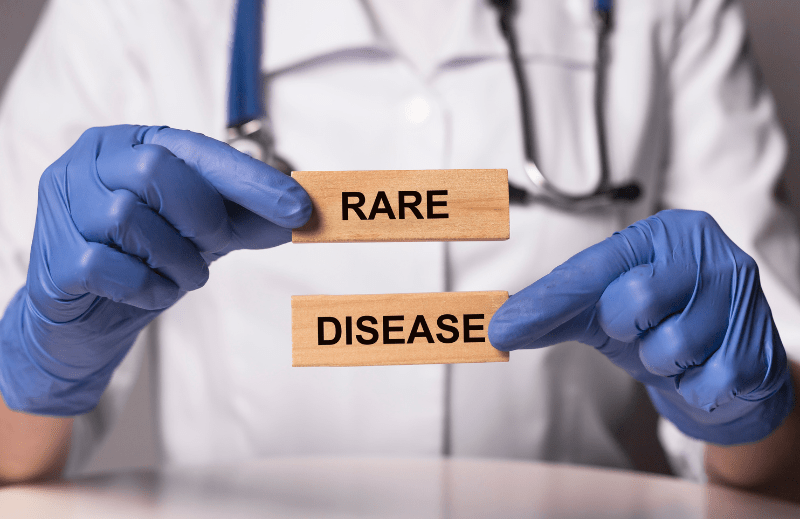Revolutionizing Rare Disease Research with long-read Sequencing
Rare diseases, characterized by their low prevalence in the population, present significant challenges for researchers and clinicians. The complexity and heterogeneity of these conditions demand innovative approaches to unravel their underlying genetic causes. In recent years, long-read sequencing (as known as third-generation) technology have emerged as a powerful tool in the field of human genomics, offering unprecedented insights into the genetic landscape of rare diseases.

Approximately 80% of rare diseases have genetic defects and hereditary characteristics that are often difficult to diagnose clinically. Short-read sequencing (SRS) methods are commonly used in clinical laboratory medicine due to their cost-effectiveness and low per-base error rate. However, SRS has limitations in capturing the full range of genomic variation. Areas of low complexity, such as repeats, and regions of high polymorphism, like the human leukocyte antigen region, present challenges to SRS and reference-based genome assembly. Additionally, structural variations are often beyond the resolution of SRS.[2]
Long-read sequencing (LRS) offers complementary strengths to SRS by producing longer reads of several thousand base pairs with uniform coverage. Although individual long reads have lower accuracy, errors are random and correctable with sufficient coverage, resulting in high consensus accuracy. LRS surpasses the limitations of SRS and enables the detection of large structural variations and complex variants. It accurately maps to the genome and accesses regions beyond the reach of short reads.
Applicable to the most challenging rare disease cases, long-read sequencing can be employed.
- Identification of disease-causing mutations: Long-read sequencing has high accuracy in detecting structural variants (SVs) such as insertions, duplications, inversions, and deletions. This enables the identification of disease-causing mutations in complex disorders, including rare diseases like Williams syndrome, Cri du Chat syndrome, and Angelman syndrome, where structural variations play a significant role in disease manifestation.[4]
- Determining haplotypes: Long-read sequencing allows for the detection and characterization of complicated genetic diseases by accurately determining haplotypes, which are collections of inherited genetic variations. [4].
- Detection of epigenetic changes: Third-generation sequencing provides a comprehensive analysis of DNA methylation patterns, histone modifications, and chromatin accessibility. This is particularly crucial in rare diseases like Rett syndrome, Prader-Willi syndrome, and Beckwith-Wiedemann syndrome, where understanding epigenetic alterations is important for disease understanding.[5]
- Understanding gene expression and disease symptoms: Long-read sequencing enables the direct sequencing of full-length RNA transcripts, providing critical insights into alternative splicing, isoform identification, and gene expression levels. This information is crucial for understanding the impact of genetic differences on gene expression and disease symptoms.[6]
- Identification of structural variations (SV): Long-read sequencing is highly valuable in identifying SVs, which are often associated with rare genetic disorders. This capability is especially important in diseases like Williams syndrome, Cri du Chat syndrome, and Angelman syndrome, where SVs significantly impact disease development and manifestation [7].
Conclusion
Long-read sequencing technology holds great promise in the investigation of rare diseases, with potential applications ranging from the detection of disease-causing mutations to transcriptome sequencing and functional analyses of genetic variants. In fact, its capabilities have the potential to revolutionize the study of genetic diseases, ultimately improving the lives of patients and their families. By providing high-quality sequencing data and in-depth insights into the genetic pathways associated with rare diseases, the long-read length of third-generation sequencing enables researchers and clinicians to gain a comprehensive understanding of the complex genetic landscape. This, in turn, facilitates more precise diagnoses, personalized treatment strategies, and ultimately, better patient outcomes.
References:
1. Field MJ, Boat TF, editors. Rare Diseases and Orphan Products: Accelerating Research and Development. Washington (DC): National Academies Press (US); 2010. 2, Profile of Rare Diseases. Available from: https://www.ncbi.nlm.nih.gov/books/NBK56184/
2. Abbasi, Ammal, and Ludmil B. Alexandrov. "Significance and limitations of the use of next-generation sequencing technologies for detecting mutational signatures." DNA repair 107 (2021): 103200.
3. Chen, Z. and X. He, Application of third-generation sequencing in cancer research. Medical Review, 2021. 1(2): p. 150-171.
4. Park, S.T. and J. Kim, Trends in next-generation sequencing and a new era for whole genome sequencing. International neurourology journal, 2016. 20(Suppl 2): p. S76.
5. Feinberg, A.P., Phenotypic plasticity and the epigenetics of human disease. Nature, 2007. 447(7143): p. 433-440.
6. Hu, T., et al., Next-generation sequencing technologies: An overview. Human Immunology, 2021. 82(11): p. 801-811.
